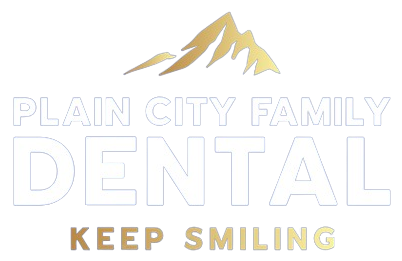Inlays and Onlays
Best Restorative Dentistry in Plain City, UT
When Do You Need a Dental Inlay or Onlay?
Damage to a tooth that is too severe to support a filling but not severe enough to require a dental cap calls for a dental inlay or onlay. Using a filling when a dental inlay is needed results in the continued decay of the remaining tooth, which eventually leads to the need for a root canal. Receiving a tooth cap or crown when one is not called for results in the unnecessary removal of healthy tooth structure.
Dental Inlays
Dental inlays are similar to fillings and fit inside the outer edges of the tooth. They can be made out of a variety of materials, but most often they’re made out of tooth-colored porcelain. The inlay procedure requires approximately two visits with our restorative dentist.. During the first appointment, you receive a tooth-decay treatment; then impressions are taken, and the temporary inlay is applied to the tooth. At the second appointment, the permanent inlay is bonded to the tooth, hiding any signs of imperfection.
Dental Onlays
Dental onlays, sometimes referred to as partial tooth caps, are similar to inlays in that the procedure is the same and takes place over the course of two days. Like a dental cap, it is a custom-made fitting that we secure to the damaged tooth; however, unlike a dental cap, it only covers a small portion of the affected tooth. Onlays cover one or more of the outer edges of a tooth. They are the conservative alternative to receiving a crown or tooth cap, and they preserve more of your natural tooth.
Frequently Asked Questions
-
Do inlays and onlays fix cavities?
Our dentist uses inlays and onlays, much like fillings, to fill or cover the area where a cavity once was. It minimizes the possibility of further decay to the existing tooth.
-
What are the most common treatments for tooth decay?
The most common tooth decay treatments that our top dentist in Plain City, UT uses include:
- Fluoride treatments
- Restorations, including fillings, inlays, onlays, and crowns/tooth caps
- Root canals
- In the most extreme cases, extraction
-
How long will it take for me to be able to eat, speak, brush, and floss as usual after receiving a filling?
Shortly after receiving a filling, you should be able to do all of the things you normally would do.

Working Hours:
MON, WED, & FRI: 8:00AM-5:00PM
SOME TUESDAYS: 8:00AM-5:00PM
THURSDAY: 7:00AM-2:00PM
SAT, SUN: CLOSED
© 2025 All Rights Reserved | Plain City Family Dental | An Art of Dental Marketing Website | Privacy Policy
